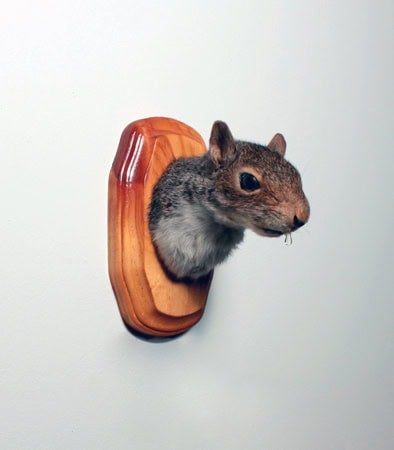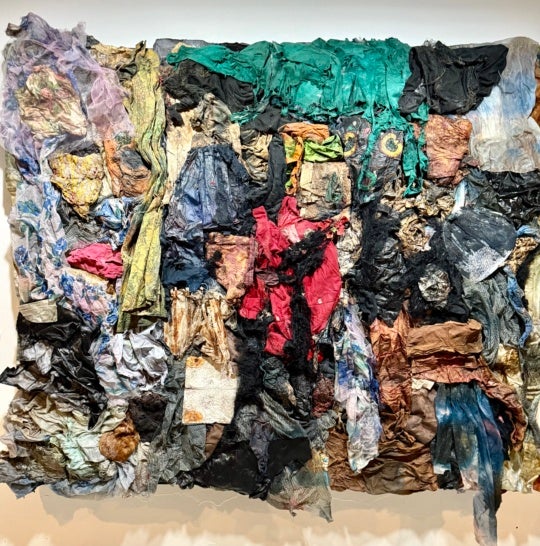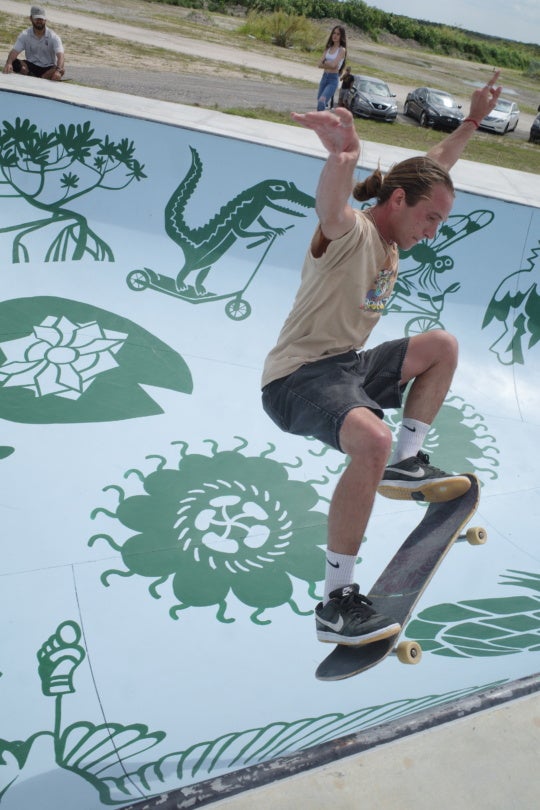
The group exhibition “Second Life,”explores the use of animal imagery in contemporary art. On view at the Kentucky Museum of Art and Craft through August 31, the show, curated by the museum’s associate curator Joey Yates, features taxidermy and other forms of appropriation of animal and insect bodies as a primary strategy for negotiating the relationship of human to animal. Taxidermy helped to create a scientific correspondence in which humans are the subject and animals the objects of study, thus also reinforcing the power relation of hunter and prey: the human interprets the animal in an attempt to capture an anthropocentrically mediated understanding of animal reality.
“Second Life”sets up this historical development of animal representation at the beginning of the show. Several of John James Audubon’s watercolors from The Birds of America—created from Audubon’s own dramatic recreations of scenes using taxidermy—appear next to Katie Parker and Guy Michael Davis’s mixed-media wall piece Zuber’s Menagerie and Damien Hirst’s silkscreen print All You Need Is Love. This initial juxtaposition of work presents a snapshot thesis that the rest of the show examines: the empirical image of the animal in Audubon’s work becomes multiplied by modern systems of mechanical reproduction that consign the animal to the status of a disassociated object of beauty, decoration, and consumerist desire (or more directly, an anthropomorphized reflection of human activity, as seen in a diorama of boxing squirrels by 19th-century taxidermist Edward Hart).

Zuber’s Menagerie places the reproduction of the animal in the context of decorative arts by combining taxidermy, 3D printing, and cut-paper backgrounds based on historic wallpaper design. It creates a productive tension between the aesthetic enjoyment of design, the reproductive objectification of the animal, and the depersonalized violence of taxidermy, to which Hirst’s work responds with the paradoxical superimposition of its own beauty and violence. The diamond dust powdering the upbeat yellow ground in All You Need Is Love brings up notions of glamour and beauty constructed by the privileged economic class. The butterflies seemingly alight on the dazzling surface in an exquisite moment of beauty, until one realizes that the butterflies were trapped and transfixed through death, converted into an object of manufactured consumerism (being one of a series of 50 prints).
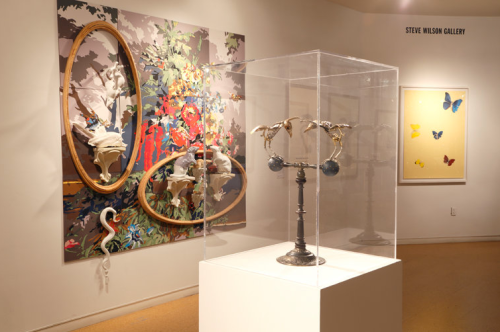
Other works in the show augment, personalize, or challenge the role of the depicted animal. An installation by Louisville native Jacob Heustis, Drool, presents the mounted heads of a steinbock, a coyote, a gerenuk, and a javelina—all equipped with hidden tubes that drip water slowly from their mouths. The disconcerting effect of slobbering conveys the sense that the animals possess an uncanny, predatory hunger for the viewer/hunter (whose trophy they supposedly are). Heustis’s estranged taxidermy resists the gaze of the viewer and destabilizes the role of the animal as a passive object of study.
Dwelling No. 7 (Corsican Ram), by New York artist Drew Conrad, expands on this interference of perspective: a ram bursts through the wall of an interior habitation, itself metaphoric of the borders of the interior human life. The manifestation of the ram occasions an apocalyptic alteration of that interior epistemology, and the melded fragments of both worlds in this work reflect larger themes in the show: namely, that the human articulation of animal reality not only does violence to the animal world but can then turn on itself and interrogate the widely accepted, working paradigm of human subject and animal object.
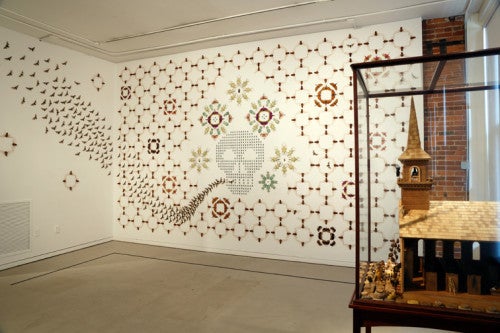
L.A.-based Carlee Fernandez’s work, as seen in Rabbit with Calla Lillies, disturbs the boundaries of the natural world by fusing the vegetal and the animal in installations that appear beautiful at first glance, but reveal a grotesque melding of the two upon closer observation. Kay Polson Grubola makes nature’s iconography specific in her insect assemblages, combining personal narrative, Celtic mythology, and feminist concerns in adornments constructed from insects. The power of the animal world to act as an underlying spiritual and ontological consciousness further reveals itself in Andréa Stanislav’s sculptures, such as Rising, which combine taxidermy and mirrors to couple the viewer’s image with that of the animals, creating a sense of intermingled spirits and deeper consciousness. A mural by University of Wisconsin professor Jennifer Angus, Repeated Warning, is composed of large, dead insects procured from Thailand. The corpses form patterns around a skull, from which a cloud of cicadas issues in a brilliant burst that breaks the design and escapes onto the adjoining wall.
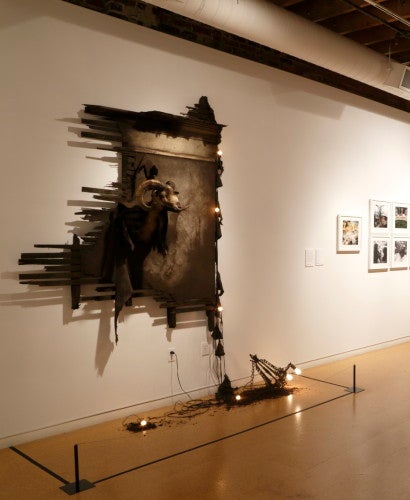
Finally, humankind is the specimen in several works. German artist Jochem Hendricks has synthesized lost or amputated appendages into diamonds that are worn by the individual, making him both the subject and object of fetishized preservation. Left Defender Right Leg, for example, is an assemblage that includes a diamond synthesized from the amputated leg of a soccer player, and Oleg’s Ear, which comprises a diamond stud earring and a photograph of Oleg wearing the stud, which was made from part of that same ear.
In The Mouse by Bigert and Bergström, the viewer sits in a cagelike cedar box—a reference to the cedar chips used in science lab mouse cages—while viewing a film that explores humans’ relationship with mice through science and religion: scenes of mice mercilessly used in science experiments are juxtaposed with those of complete reverence and convivence in Eastern religions, further blurring the boundary between human and animal.
Joshua Hamilton lives in Southern Indiana, teaches Spanish, and researches Spanish visual poetry and neo-avant-garde art. He completed his PhD in Spanish at Indiana University in 2013.
